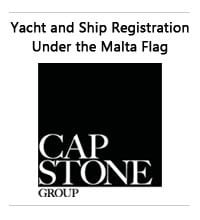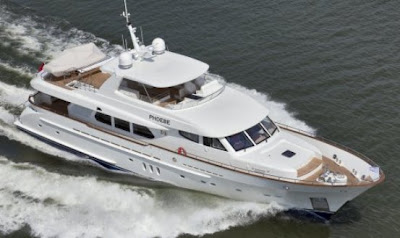
Presentation
When Galeon launched the 640 Fly in the middle of last year the 2008, the company extended it size by eleven feet coming from the previous bigger 530 Fly model. The 640 Fly continued the Polish builder voyage to bigger sizes and with this following the relationship with renowned British architect Tony Castro, who did a complete job for the current second in size Galeon model, designing hull, exterior lines, and interior layout plans. Castro has so far designed five models of the current Galeon model line up, with four of these always being a new flagship. For the 640 the British designer and Galeon created a very interesting good looking nineteen metre motor yacht set to challenge the best in the market for a couple of unique reasons. First is surely the four cabins plus crew accommodation plan, a rarity in this size especially since most builders started concentrating there spaces resource for the mid ship located full beam owners suite, a luxury the 640 Fly made sure not to miss. Other reasons are also the thirty knots plus speeds with the small engine choice which goes whisker short of forty knots from the bigger option, the luxurious details giving exquisite comforts in all area, and last is surely the sea keeping capability of the Tony Castro vee shape hull.
Accommodation
The 640 Fly welcomes you in the spaciousness of its exterior spaces with a large bathing platform aft which stows a tender on top and which is lowered by a hydraulic crane hidden in the aft stern bulkhead, or by the optional Opacmare Transformer which apart from making launching retrieving toys as easy as it gets also creates and makes the area become a semi submerged beach in or just above the water. The yachts aft deck features a C-shaped settee located centrally, where from it is possible to connect to the fore part with two steps leading to the side decks where is located a two person sunbathing area, and to the flybridge via the integrated stair case located to port. The flybridge offers a wet bar small galley featuring a BBQ grill with sink, C-shaped settee to starboard, a big solarium to fore for three or four adults, and the helm station to starboard. For those who think they can never get enough of the flybridge it is also possible to equip the area with a retractable hard top.
Passing through the patio door you are welcomed in the rich atmosphere of luxury wood finishing complimented by lights and unique stars head liners of the interior. Here the split level saloon presents a C-shaped settee to port, and opposite settee for three to starboard in the lower area. Two steps up lead you to the raised part which has the fully equipped galley to port also in a C-shape, opposite dining C-shaped settee, and a single or double seated helm station. From the starboard by the pilot station it is possible to go from a side door directly on to the deck.
From a centre corridor and down a set of five steps leads you to the accommodation deck below featuring four cabins, and three guest heads two of which en-suite for the owner and VIP rooms. The first cabin to welcome you below is the guest fourth cabin with two L-shaped berths and also being the smallest bedroom on board, to fore is the VIP suite, and to starboard we have the third guest cabin with two in line berths. In between this cabin, and the VIP suite is the third shower head which services the two single cabins. The owner suite located centrally and to mid ship is reachable going down three further steps and here we find a central located queen size double berth along the hull port side, a shower head to aft, wardrobe, and a desk breakfast table for two with a part of this transforming to a relaxing chaise lounge. To aft is the crew cabin equipped as standard with a single berth, separate shower head and an utility area.
 Performance
Performance
Tony Castro who before this has designed the 440, 530 models for the Polish builder is renowned for fast sea worthy hulls having a deep to moderate vee hull with close to twenty degrees deadrise aft. Castro has designed the 640 Fly hull with a deeper vee to fore, and moderate to seventeen degrees deadrise aft. Castro made no use of semi propeller tunnels this being to obtain low planning speeds in mid ten knots, which can be of good use to keep a comfortable ride in big head seas. Galeon offers three engine choices for the 640 Fly all being by MAN and start with a standard twin V10 1100hp, optional V12 1224hp, and going up to the more powerful V12 1360hp. The 640 Fly has top speeds of 32 knots with the smaller 1100hp choice, 34 knots with the 1224hp, and 37 knots with the 1360hp. Range is an approximate of 300 nm at 28 knots with the standard 1100hp choice, and 290 nm at 30 knots with the 1224hp. Full data with the larger 1360hp choice is not so far available.
Positive
Four cabins
Full beam owners suite
Bathing platform transform functions
Negative
Small flybridge dinette
Competition
In this ten boat range competition and size the Galeon 640 Fly is unique to have its fourth cabin with L-shaped format, therefore being the roomier of the bunch. The Astonoda 66 GLX was among the first to offer four cabins with full beam owners cabin in this size, while the Aicon 64 and smaller Princess 62 both in production for over three years are the most successful. The semi custom Carnevali 65 has no full beam owners cabin, and the fourth cabin has a separate entrance. Criteria for competition was flybridge motor yacht, length overall from nineteen to twenty metres, and four cabins.
Aicon 64 Flybridge - good seller with optional four cabins layout a deal breaker
Astondoa 66 GLX - Spanish presented in 2000 to Italians Nuvolari Lenard design
Carnevali 65 - semi custom, available as 68 with extended platform
Dyna 65 - Taiwan with EURO looks, standard bunk fourth cabin
Hatteras 64 Motor Yacht - US legend, optional four cabin but no crew cabin aft
Ladenstein 68 - Austria company Thai build, optional four cabin, longest
Leonard 66 - Italian built Carlo Trezzi design, bunk fourth cabin optional
Princess 62 - smallest of the Group, standard four cabins a success
Uniesse 65 My - seaworthiness, quality, standard four cabin with bunks fourth
WILD CARD: Riviera 61 Enclosed Bridge - sportfish, four cabins but two are bunks
Conclusion
Improving, each step at a time, with always better quality. This is in synthesis what Polish Galeon has done in the last decade with each new bigger model representing a leap forward in the standard. When I first saw a Galeon about eight years ago, the boat which was an eight metre flybridge motor cruiser had many interesting features but was also in need of improvement in other areas. Today the Polish company has done among the most amazing quality overhauls to its brand name in recent years, and can challenge the best of European boat builders, with a product which looks, and most of all feels good. The 640 Fly presented last year has been another big leap forward for Galeon, which thanks to its five years plus collaboration with British Tony Castro gets close to full marks in all departments. Apart all this which for the current buyer is interesting but not a deal breaker, the designer and builder made sure to make the 640 Fly stand out from the competition with a spacious interior which offers the largest fourth cabin in the category, and with the bigger MAN 1360hp engines option giving also among the higher speeds in this size. These surely at nineteen metres put the 640 Fly in pole position in this size flybridge motor yacht backed out by a very high standard in finishing, construction, design, and hull shape.
Technical Data
LOA. 19.96 metres (65.4ft)
Hull Length. 19.85 metres
Waterline Length. 17.29 metres
Beam. 5.25 metres
Draft. 1.16 metres
Displacement. 34 t
Fuel Capacity. 3500 litres
Water Capacity. 1000 litres
Accommodation. 8 guest berths in 4 cabins, 2 crew berths in 1 cabin
Engines. 2 x MAN 1100hp, 1224hp, 1360hp
Propulsion. in line shaft
Speed. 34 knots max, 30 knots cruise with MAN 1224hp, 37 knots max with 1360hp
Range. 300 nm at 28 knots with 1100hp, 290 nm with 1224hp
Hull Shape. vee hull with seventeen degrees deadrise aft
Project. Tony Castro
Construction. hand laminated polyester resin, infusion used for some parts
Certification. CE B
www.galeon.pl
Picture Copyright Galeon. Data Galeon.


























